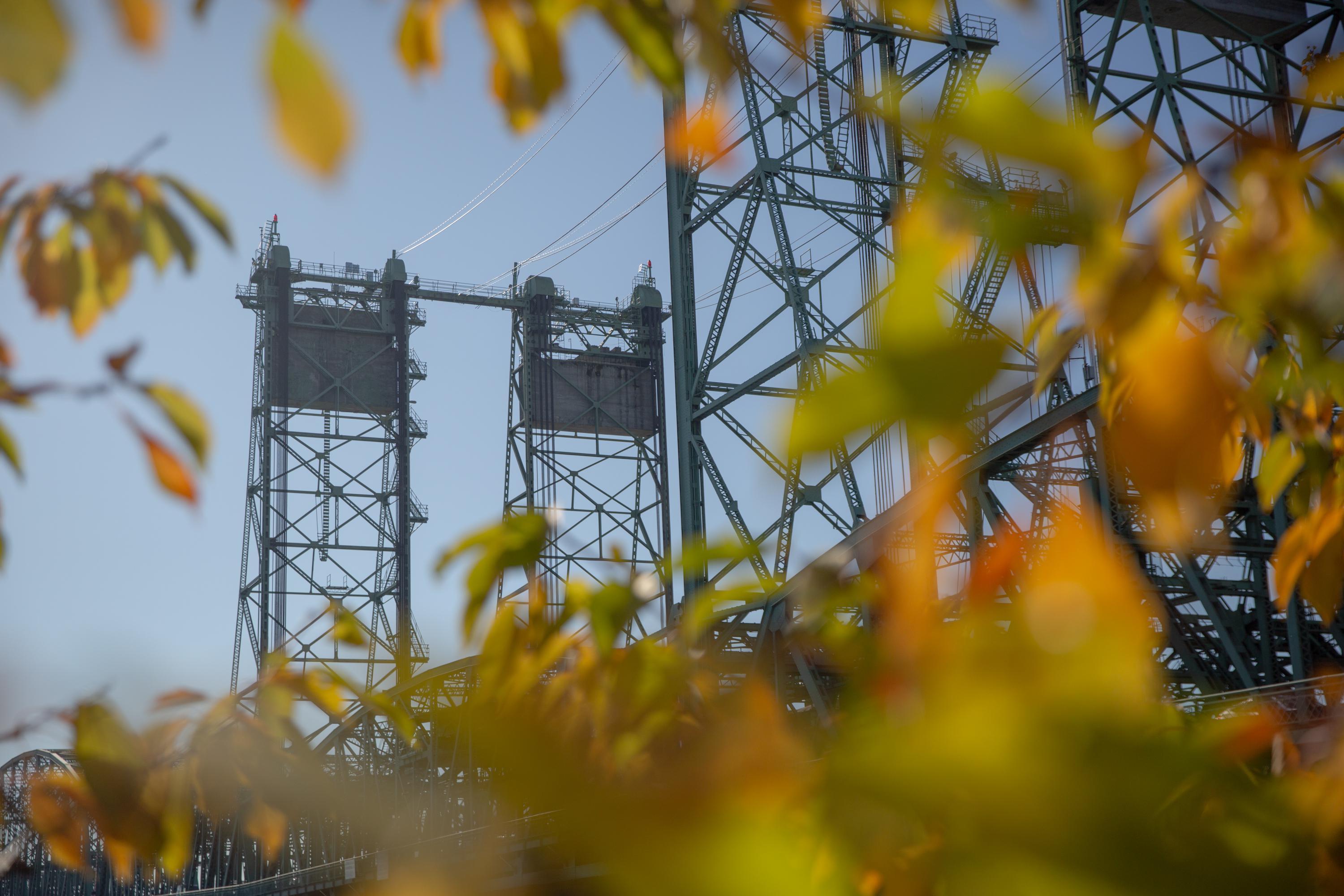
The Interstate 5 Bridge is pictured Friday, Nov. 1, 2019, in Vancouver, Wash.
Bradley W. Parks / OPB
As Washington shows early signs of getting serious about replacing the Interstate 5 bridge, Oregon’s lawmakers said Wednesday they want to be wooed.
Oregon still feels like “the bride left waiting at the altar,” said Sen. Lee Beyer, D-Springfield, after the Washington State Senate infamously refused in 2013 to fund a replacement for the century-old bridge.
And because the massive project will have a massive price tag, Oregon lawmakers first want to see proposals from their neighbors to the north, and likewise see what may come from the Biden Administration’s newly revealed infrastructure plan.
“It’s a little bit of a ‘Show us you’re serious,’” said Beyer, who co-chairs Oregon’s joint committee on transportation.
On Wednesday, Washington’s House transportation committee revealed it could spend $1 billion on replacing the Interstate 5 bridge — the largest chunk of funding in a sweeping plan to invest billions in dozens of state projects over the next 16 years.
The Washington House’s plan gels with that state Senate’s figures. On Jan. 28, senators on their transportation committee estimated Washington would kick in $1.2 billion.
Washington’s plan, however, is not fully baked. Any proposal will have to show where the state will cobble together the money, such as through the state’s gas taxes, rental car taxes or from other funding sources. Then, it must run a gauntlet of committee voting before it goes to votes on the floors of both chambers.
Washington’s legislative session ends April 25, less than a month away. Washington legislators tell OPB they are optimistic they can pass a package by then.
Beyer, who chaired the Oregon transportation committee in 2013 and watched the planned bridge replacement known as the Columbia River Crossing unravel, said Oregon doesn’t expect to put forward any revenue pack this year.
“I don’t want it to be taken overly critical because we’ve had really good discussions with Washington legislators who have been involved,” Beyer said. “We’re still sort of watching to see how that goes and how important it is to Washington.”
Rep. Susan McLain, D-Hillsboro, who co-chairs Oregon’s transportation committee with Beyer, agreed and noted there are unfinished projects from Oregon’s 2017 transportation package that remain priorities.
“I think the state of Washington is working hard to make sure we do feel like they’re committed and see that they’re committed with actual dollars on the line,” McLain said.
And, Beyer and McLain said, they are waiting to see what the bridge replacement price tag will look like when estimates firm up. The project is still in early design phases and major questions like what sort of mass transit options it will include remain unclear.
“We don’t think we’re far enough on the project to know what it’s going to cost,” McLain said.
Staff overseeing the replacement expect the project to cost between $3 billion and $4.5 billion.
“Right now, from both Washington and Oregon we’re looking for anything from $1 billion to $1.2 billion,” said Greg Johnson, program administrator for the Interstate 5 Bridge Replacement Program, which is jointly funded by the two states’ departments of transportation.
“But this is without knowing how much may come from the federal government, or how much tolling may fill in any gaps,” Johnson added.
The federal government, both states and bridge tolling will likely contribute the four pots of funding.
On Wednesday, the Biden Administration released a $2 trillion plan to reinvest in U.S. infrastructure. That included $115 billion for roads and bridges.
Johnson said I-5 bridge replacement staff don’t know how much they will receive from the federal government. He said their expectations were built off federal transportation spending before Biden announced his infrastructure plan. Biden’s plan also still has to weave its way through Congress.
How much the project would raise from tolls remains unclear. Tolling, Johnson said, will likely be the last funding stream to take shape.
“Our goal is to make sure that we have exhausted all other opportunities – whether federal or local – to bring dollars to this program,” Johnson said. “But we know tolling for programs of this size are generally part of the mix.”
Johnson’s staff has recently been working with community members to set up advisory groups. The goal is to lay out questions and concerns before the behemoth project begins in earnest.
McLain noted that, too, is part of the reason why Oregon lawmakers aren’t putting out a package yet.
“I personally think we’re all doing the most we can to show good faith, and we’re doing the most we can to be practical in the way of resources to keep this project going full bore,” McLain said.
